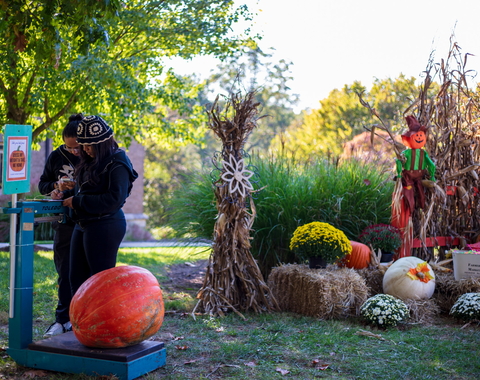Professor Dean Presnall, former Geophysical Laboratory postdoctoral fellow, and long-time visiting scientist, passed away on February 3, 2023, surrounded by loved ones at his home in Chevy Chase, Maryland. Dean was 87 years old and is survived by his wife, Barbara, of 58 years, two children, Aaron and Eva, and two grandchildren.
Dean Presnall was an ‘old school’ experimental petrologist, trained in a Geophysical Lab tradition handed down from his Ph.D. mentor E.F. Osborn and the likes of Bowen, Shairer, and Yoder. Dean was a true master of experimental petrology, applying phase equilibrium constraints to understanding the petrogenesis of igneous rocks, combining a rigorous experimental approach with a profoundly deep understanding of melting phase relations. Dean was renowned for applying liquidus phase diagrams, especially in low-variance chemical systems, to problems related to the generation and crystallization of mantle-derived magmas.
Dean earned an undergraduate degree in geology and mineralogy from the Pennsylvania State University in 1957, after which he received a master’s degree in geology from the California Institute of Technology in 1959. Returning to Penn State, Dean earned his Ph.D. in experimental geochemistry under E.F. Osborn in 1963, where, in an elegant study, he worked out the complex liquidus phase relations in the system forsterite-diopside-iron oxide at 1 atm as a function of oxygen fugacity, applying the results to the crystallization of basaltic magmas and setting the stage for his later work at high pressure.
Dean next joined the Carnegie Institution of Washington’s Geophysical Laboratory as a postdoctoral fellow (1963-1967), a mecca for any experimental petrologist. As a post-doc Dean struck out of his comfort zone to measure the equation of state properties of hydrogen at high pressures and temperatures, both challenging and potentially explosive experiments!
In 1967 Dean joined the nascent Southwest Center for Advanced Studies, which in 1969 became The University of Texas at Dallas, as an Assistant Professor where he joined a cadre of adventurous scientists in establishing a new geology department. Dean, whose mind was always somewhere in a phase diagram, then in 1969 published in the American Journal of Science a remarkably prescient and elegant treatment showing through rigorous geometric analysis how ternary liquidus phase diagrams reveal the nature of fractional melting in the mantle. Dean was promoted to full professor in 1978 and spent more than three decades at UTD until his retirement in 1999 as an emeritus professor.
At UTD, Dean built a modern experimental petrology lab equipped with an array of furnaces and end-loaded high-pressure piston-cylinder devices of his own design. After forays into measuring the electrical conductivity of basalts during melting and establishing important technological improvements for measuring experimental temperatures and for avoiding iron loss to Pt during experiments, Dean, together with his many students and postdocs, set out on the arduous and decades-long task of determining liquidus phase relations in binary, ternary, quaternary and quinary systems as a function of pressure.
In one of his best-known studies published in the Journal of Petrology in 1979, Dean weighed in heavily on a vigorous debate regarding the depth at which mid-ocean ridge basalts (MORB) form. Dean predicted that a low-temperature cusp along the solidus of model lherzolite in the system CaO-MgO-Al2O3-SiO2 related to the plagioclase to spinel transition controls both the degree and composition of MORB melts, in contrast to interpretations suggesting deeper sourced more MgO-rich primary melts. Ironically, the modern paradigm for MORB melting suggests that both ideas were partially correct because melting is polybaric, beginning deep but is dominated by more shallow melting. Dean, understanding the importance of the new paradigm, recognized how volatile elements could change phase relations and the nature of low-degree melts, so in his later career, he turned his focus to CO2-bearing systems where, together with several postdocs, he showed how the array melts compositions from carbonatite to kimberlite to komatiite can be explained by variable degrees of melting involving CO2.
After he retired from UTD in 1999, Dean did not miss a step, moving back to Washington D.C. to join the Geophysical Lab as a visiting scientist until 2005, after which he was a visiting scientist at the Bayerisches Geoinstitut in Germany and the University of Bristol until 2009.
Throughout his career, Dean held to a constant and unyielding philosophy that only through a rigorous understanding of phase relations could the big questions in igneous petrology be attacked and solved. Experimentally, Dean’s attention to every conceivable detail and incredibly high standards earned him the greatest respect from his community. Dean was also an excellent engineer, designing his own high-pressure devices. Dean was one of the first in the U.S.A. to adapt the new multi-anvil technology to his research, and he designed his own 1500-ton press frame and cylindrical 6/8 multi-anvil device. This attention to detail also applied to clarity in his writing, where every sentence would be carefully dissected and crafted to be both informative and understandable.
As his former student, I have never met anyone with such a gift for visualizing and explaining multi-component phase relations. I owe anything I know about phase diagrams to Dean. After his retirement, when Dean moved to the Geophysical Laboratory as a visiting scientist, he brought his two multi-anvil presses with him, donating them to Carnegie. Now, at the Earth and Planets Laboratory, we benefit each day from Dean’s generosity. And while Dean will be greatly missed, I think he would be thrilled to know that his experimental legacy lives on with each experiment we do.
Written by
Michael Walter
Director, Earth and Planets Laboratory




